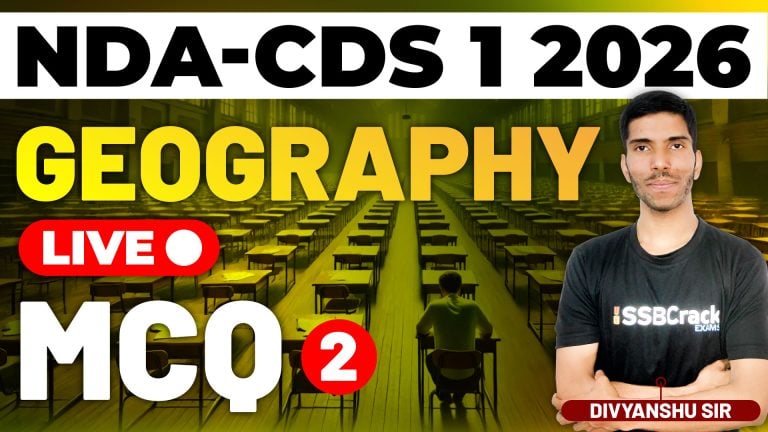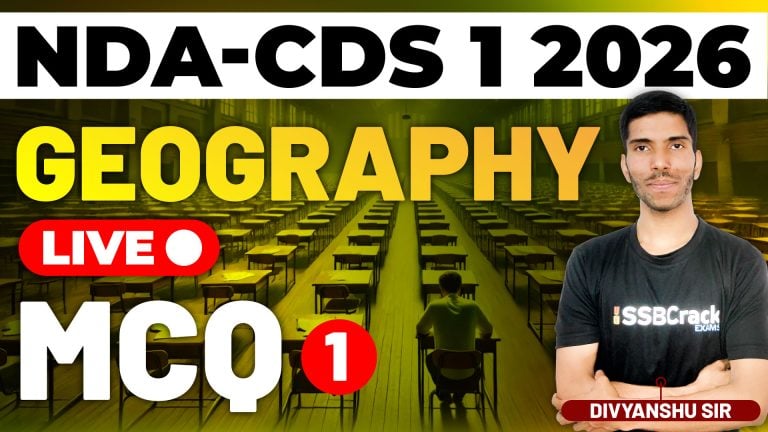India’s medieval period witnessed major political, cultural and social transformations shaped by the arrival and expansion of various Islamic powers. Beginning from the early 8th century and continuing until the 16th century, this era laid the foundation for new administrative systems, architectural styles, trade networks and Indo-Islamic cultural synthesis.
NDA & CDS 1 2026 Exam History – Medieval India – Class 2
1. Early Islamic Invasions (8th–11th Century)
a) Arab Invasion of Sindh (712 CE)
The first significant Islamic incursion into India was led by Muhammad bin Qasim, who conquered Sindh and Multan.
Key impacts:
- Introduction of Arab administration and taxation.
- Rise of early Indo-Islamic contact through trade.
- Limited influence beyond Sindh.
b) Raids by Mahmud of Ghazni (1000–1027 CE)
Mahmud of Ghazni launched 17 raids into north-western India.
Key features:
- Focused on wealth extraction.
- Attacked temples such as Somnath.
- No territorial control established in India.
- Resulted in weakening of Rajput and Hindu Shahi kingdoms.
c) Muhammad Ghori’s Campaigns (1175–1206 CE)
Muhammad Ghori’s invasions were aimed at territorial expansion, unlike Ghazni.
Important battles:
- First Battle of Tarain (1191) – Ghori defeated by Prithviraj Chauhan.
- Second Battle of Tarain (1192) – Prithviraj defeated; foundation laid for Muslim rule in North India.
- Battle of Chandawar (1194) – Defeat of Jaichand of Kannauj.
Ghori’s general Qutb-ud-din Aibak consolidated conquests and later founded the Delhi Sultanate.
2. Establishment of the Delhi Sultanate (1206–1526)
The Delhi Sultanate became the first major Islamic empire in India, lasting over three centuries and comprising five dynasties.
a) Mamluk (Slave) Dynasty (1206–1290)
Notable rulers:
- Qutb-ud-din Aibak – Laid foundation of Delhi Sultanate, began Qutb Minar.
- Iltutmish – Consolidated empire, introduced Iqta system, completed Qutb Minar.
- Razia Sultan – First and only woman Sultan of Delhi.
b) Khilji Dynasty (1290–1320)
- Alauddin Khilji expanded the empire into south India.
- Introduced market reforms, price control, and strong military structure.
- Defeated Mongols multiple times.
c) Tughlaq Dynasty (1320–1414)
Key rulers:
- Ghiyasuddin Tughlaq – Strong administration.
- Muhammad bin Tughlaq – Known for ambitious but unsuccessful projects like token currency and capital shift to Daulatabad.
- Firoz Shah Tughlaq – Built canals, gardens and welfare institutions.
d) Sayyid Dynasty (1414–1451)
- Weaker rule; largely symbolic authority after Timur’s invasion (1398).
e) Lodi Dynasty (1451–1526)
- Afghan dynasty; strengthened provincial administration.
- Ibrahim Lodi was defeated by Babur in the First Battle of Panipat (1526), marking the end of the Delhi Sultanate.
3. Regional Kingdoms and the Rise of Indo-Islamic Culture
While Delhi Sultanate ruled North India, several powerful regional kingdoms flourished:
Vijayanagara Empire
- Fought Bahmani Sultanate for Deccan dominance.
- Peak during Krishnadevaraya.
Bahmani Sultanate
- First independent Islamic state in South India (1347 CE).
- Later split into Deccan Sultanates.
Rajput Kingdoms
- Continued to resist northern invasions.
- Built strongholds like Chittorgarh and Ranthambore.
Indo-Islamic Cultural Synthesis
Medieval India saw blending of Indian and Islamic traditions in:
- Architecture – Arches, domes, minarets, Indo-Saracenic style.
- Language – Rise of Urdu.
- Music & Art – Sufi influence; Persian styles blended with Indian forms.
4. Arrival of the Mughals (Beginning of Early Modern Period)
The medieval era from Islamic invasions concludes with the foundation of Mughal rule in 1526.
- Babur defeated Ibrahim Lodi in Panipat.
- Initiated a new phase of governance, economy and art.
✔ MCQs on Medieval India (Islamic Invasions)
1. Who led the first major Islamic invasion of India in 712 CE?
A. Mahmud of Ghazni
B. Muhammad Ghori
C. Muhammad bin Qasim
D. Alauddin Khilji
Answer: C
2. Mahmud of Ghazni invaded India mainly for:
A. Spreading religion
B. Establishing an empire
C. Trade expansion
D. Plundering wealth
Answer: D
3. The Second Battle of Tarain (1192) resulted in the defeat of:
A. Prithviraj Chauhan
B. Jaichand
C. Rana Sanga
D. Balban
Answer: A
4. Who is known as the founder of the Delhi Sultanate?
A. Iltutmish
B. Qutb-ud-din Aibak
C. Razia Sultan
D. Ghiyasuddin Balban
Answer: B
5. The Iqta system was introduced by:
A. Alauddin Khilji
B. Iltutmish
C. Firuz Shah Tughlaq
D. Sikandar Lodi
Answer: B
6. Which Sultan is associated with market control reforms and price regulations?
A. Muhammad bin Tughlaq
B. Balban
C. Alauddin Khilji
D. Bahlol Lodi
Answer: C
7. Who shifted the capital from Delhi to Daulatabad?
A. Ghiyasuddin Tughlaq
B. Muhammad bin Tughlaq
C. Firuz Shah Tughlaq
D. Ibrahim Lodi
Answer: B
8. Which event led to the downfall of the Tughlaq dynasty?
A. First Battle of Panipat
B. Timur’s invasion in 1398
C. Battle of Chandawar
D. Battle of Talikota
Answer: B
9. The Bahmani Sultanate was founded in which year?
A. 1320
B. 1347
C. 1398
D. 1451
Answer: B
10. The Delhi Sultanate ended in 1526 after whose defeat?
A. Babur
B. Ibrahim Lodi
C. Humayun
D. Rana Sanga
Answer: B
Conclusion
India’s medieval period from the Islamic invasions marked a dynamic phase of political change and cultural growth. Despite conflicts and power struggles, this era resulted in long-lasting contributions to art, architecture, administration and society, shaping India’s historical identity.

















